Out with Papa-figos
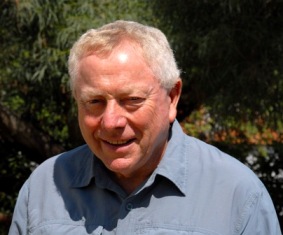
Clive Viney - co-author of Algarve Wildlife - the natural year
Papa-figos (which literally translates as fig eater) is the Portuguese name for the Golden Oriole, one of the iconic visiting birds of the Algarve. Clive Viney is the co-author of Algarve Wildlife - the natural year, and now, under the guise of Papa-Figos, chronicles his finds, thoughts and feelings while walking in the Algarve countryside throughout the natural year. Look out for his regular updates, illustrated by his fellow co-author and photographer, Ray Tipper, who has kindly provided some of the photographs that illustrate these articles by clicking through from the links below.
The Pines of Monte Gordo
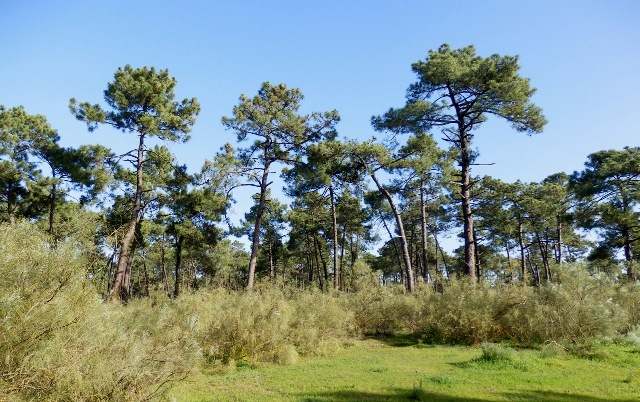
The Pines at Monte Gordo
In the extreme southeast corner of the Algarve, just behind the Praia de Monte Gordo, there is a thick belt of pines and sandy heathland. This protected area of 430 hectares is formally known as the Mata Nacional das Dunas Litorais de Vila Real de Santa António.
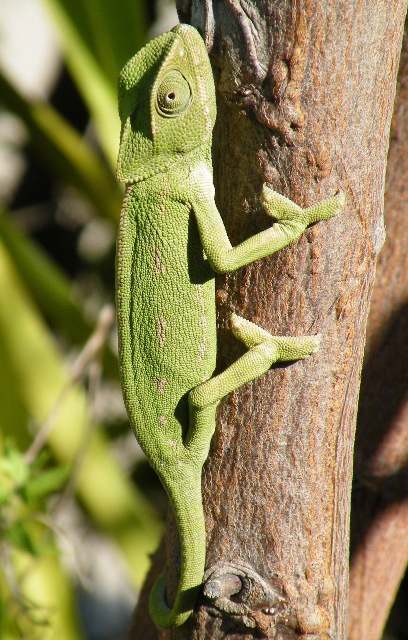
Mediterranean Chameleon
At the end of the 19th century, sand was rapidly silting up the entrance to the Rio Guadiana. Since Roman times ore had been exported down the navigable Rio Guadiana from the mines at São Domingues. To stabilise the fragile dune system, the government planted both Maritime Pines Pinus pinaster and Stone Pines Pinus pinea.
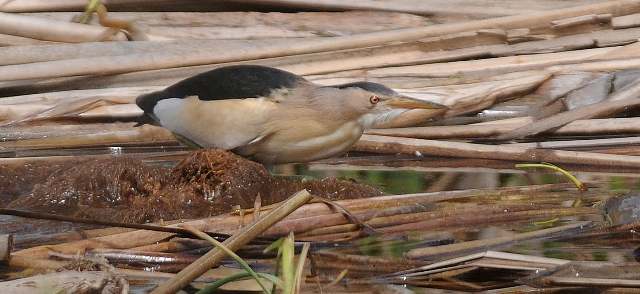
Little Bittern - Picture Ray Tipper: Licence enquiry...
This attractive area is fully open to the public. Access is on foot from the beach or by following trails through the pines. The trails are popular with dog walkers, groups of hikers, joggers and cyclists. Heavy fines are imposed on those using motor vehicles on the dunes. A popular trail is the Chameleon Trail, where signs suggest that the Mediterranean Chameleon could be encountered. No doubt, many chameleons have a home there but finding one of these delightful reptiles is a matter of luck. They are most often seen in August and September when females descend from trees and bushes to lay their eggs in a self-dug burrow.

Ferruginous Duck - Picture Ray Tipper: Licence enquiry...
Within the reserve are several pools, both tidal and freshwater. The small lake close to Aldeia Nova was managed to diversify wildlife and a birdwatching hide and information boards were erected – even in brail. Sadly, as is often the case in the Algarve, the hide was not maintained and collapsed. It seems that whilst grants are easily obtained for such works, funds for future maintenance are not set aside.
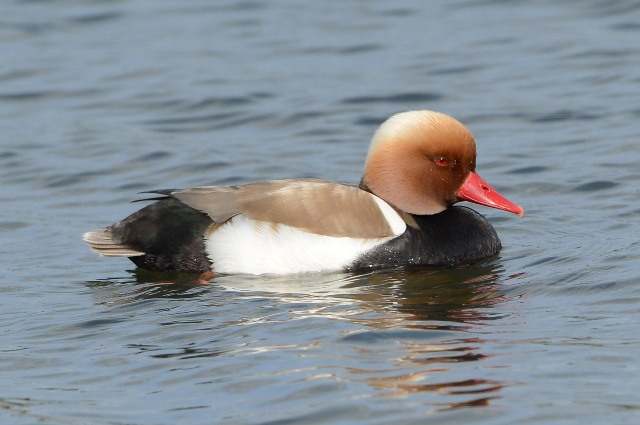
Red-crested Pochard Picture Ray Tipper: Licence enquiry... -
Beneath the enclosed canopy, flora is interesting but not diverse. White Broom Retama monosperma dominates the scrub layer and in spring orchids should be looked for. In the pines, birds seem scarce but include Crested Tit and Short-toed Treecreeper and on passage both Pied Flycatcher and Spotted Flycatcher are easily seen. There may be more to discover, as in late spring the rare Western Orphean Warbler has been seen and heard. Across the border this species breeds in the pines of the Coto Doñana. Common Cuckoos and Turtle Doves are becoming scarce in the Algarve but here both can still be heard.
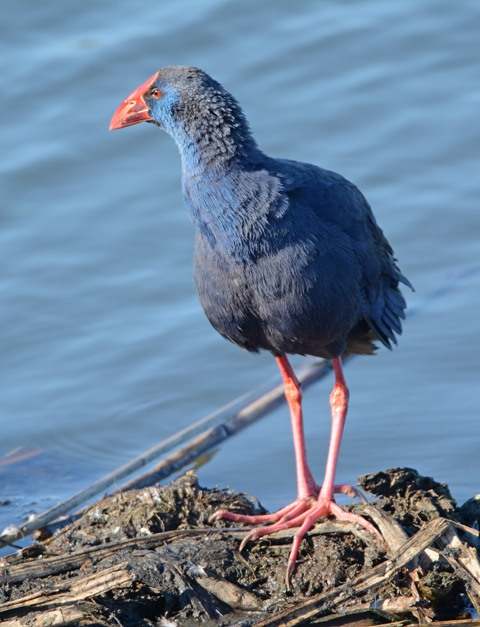
Western Swamphen - Picture Ray Tipper: Licence enquiry...
In 2010, when the core area of the Castro Marim reserve at Cerro do Bufo was inexplicably declared out of bounds, I developed an alternative strategy for observing the flora and fauna of the lower Guadiana Valley. This paid immense dividends, as it led to the discovery of several sites with good habitat diversity. One stop that I never miss is the lake amidst the pines at Aldeia Nova. Invariably, each visit something exciting is discovered.
Late June is probably the least attractive time of year to seek out Algarve wildlife. Wildflowers have all but finished, most birds have stopped breeding and it is a few weeks before autumn migrants pass through. It can be hot but the bonus is long hours of daylight and starting at dawn, several hours can be enjoyed before it becomes uncomfortable.
On 27th June, on the lake, I counted 17 Red-crested Pochards with three dependent juveniles, ten Common Pochards, a pair of Shovelers, a few Gadwall, and several Mallards among numerous Common Coots. The real prize, though, went to a superb male Ferruginous Duck that permitted close observation. This duck is rare anywhere and may well have bred on the lake. With the lack of management, reeds have grown thickly along the western margin. I was delighted when a superb male Little Bittern popped up. I often see Purple Swamp-hens here but they are shy and much easier to see strutting around the fairways adjoining São Lourenço Lake at Quinta do Lago. Later that morning, not far away, I saw Purple Herons and Glossy Ibis and I wondered that if given a chance they might occur here.
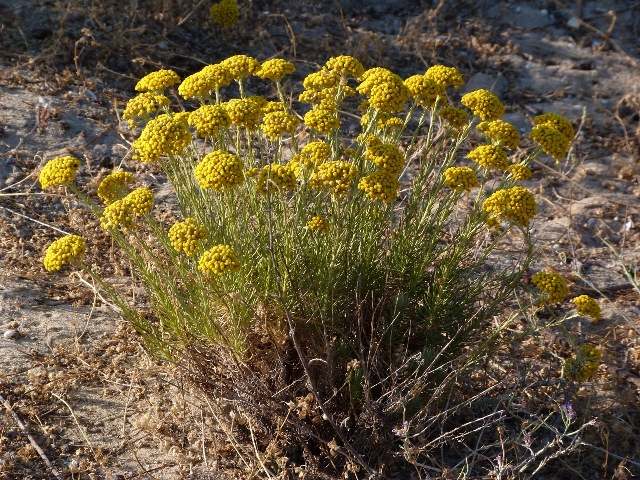
Curry Plant Helichrysum italicum
In the pines, as well as the ubiquitous Iberian Azure-winged Magpies, I had good views of an Iberian Green Woodpecker and a Great Spotted Woodpecker. As for flora, the pungent Curry Plant Helichrysum italicum and the scabious-like Pycnocomon Pycnocomon rutifolium were showing well. The pretty Yellow Halimium Halimium calycinum demonstrated that the cistus family had not quite finished flowering. I watched a huge Stag Beetle crossing the sands.
Once tired of exploring the pines, a lovely beach awaits and good restaurants are not far away.

